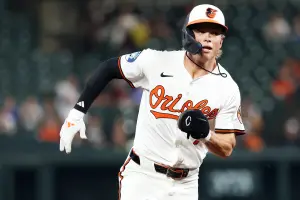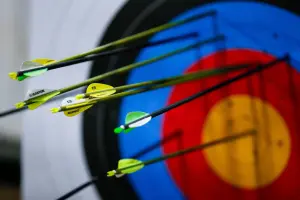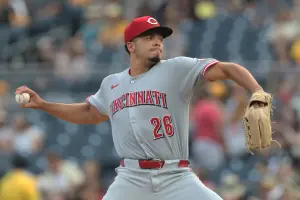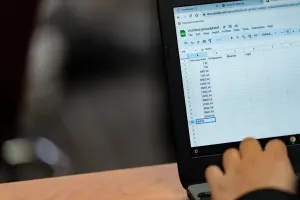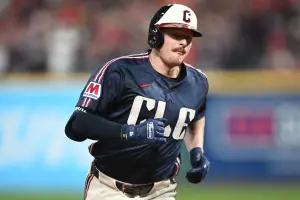
(*) ROTISSERIE: Resurgent stars provide late-season boost
Over the past few weeks leading up to MLB’s one—and now only—trade deadline, contending teams spent countless resources and time trying to find the player (or players) who could help propel them toward a championship. They’ll now have roughly two months to see if their instincts were right or wrong. The problem is… two months is an eternity when it comes to the ebbs and flows of a baseball season. Making that call with so many games to play is most likely going to be a fool’s errand.
That’s why I don’t see the single July 31 trade deadline sticking around for very long. The only way to “win” the deadline is to make an impactful addition that helps win a championship without giving up any prospects who turn out to be good players. Virtually every other outcome makes a GM look bad.
If a fringe contender playing well leading up to the deadline (say the San Francisco Giants) decides to buy, then reverts to a below-average team it’s been all season, that’s a bad decision. If a fringe contender playing poorly leading up to the deadline (say the Arizona Diamondbacks) decides to sell, then reverts to the fairly decent team it’s been all season, that’s a bad decision. If a team makes a move to buy at the deadline, then gets hit with significant injuries that dramatically curtail its ability to contend, it was a bad decision. The Aug. 31 waiver deadline, as complicated as it was, at least gave teams time to fully assess their chances before either going all-in or folding.
Keeper league fantasy owners are all too familiar with this type of dilemma. A bold trade might be just the thing to fuel a championship run. But what about those in redraft leagues? Is there any way to stage a monumental comeback over the final two months when none of the other owners in the league are willing to trade anything of value?
The answer is yes. The only problem is, the players have to do the heavy lifting.
We’re not talking about Christian Yelich or Cody Bellinger, who’ve done all they can over the first four months of the season. No, the players who could end up carrying their fantasy teams to a title down the stretch have been mostly dead weight all season long. These high-priced under-performers are finally showing signs of catching fire—with just enough time remaining in the regular season to do some serious damage:
Paul Goldschmidt (1B, STL): A borderline first-round pick in mixed leagues, Goldschmidt struggled over the first half of the season with an uncharacteristic .246/.336/.405 slash line, 14 homers, and 31 RBI. But thanks to a run last week of home runs in six consecutive games, he’s started to catch fire. Through July 28, he’d hit a total of 10 homers in the month, nearly doubling his season RBI total and slugging .687. Now that’s more like it.
José Ramírez (3B, CLE): Perhaps the biggest bust of this year’s first round, Ramirez was hitting under .200—and slugging under .300—as recently as June 12. Though he hit only four home runs to that point, his 16 stolen bases at least salvaged some of his fantasy value. Since then, however, Ramirez has looked more like the player who was the consensus No. 3 player on draft boards this spring. Over his next 36 games, he raked at a .324/.369/.641 clip with 10 homers, 30 runs, 34 RBI, and six steals. Fantasy owners who continued to stick with Ramirez—or better yet, those who were able to buy low in a trade—are now reaping the rewards.
Carlos Correa (SS, HOU): A cracked rib in late May sidelined Correa for two months, turning an encouraging start into what looked like another disappointing season. In his second game off the injured list, he drove in five runs on a pair of hits, including a grand slam. Although it’s hard to project what he’ll do on the basis of a handful of games since he returned, Correa should continue to thrive in an Astros offense that’s one of the best in the majors. And unlike fantasy teams who had to endure the weeks of subpar performances from Goldschmidt and Ramirez, Correa’s fantasy owners were able to replace him while he was out and plug him back in now that he’s healthy.
Aaron Judge (OF, NYY): Speaking of potent offenses, the Yankees have battled injuries all season, but have managed to rank in the top five in scoring, home runs, and slugging percentage. They still have a few key players out, but getting Judge back after he missed two months with an oblique injury was a major plus. In the 30 games following his stint on the injured list, Judge was solid but not spectacular (.282, six HRs, 20 runs, 17 RBI). However, his contact rate this season is a career high, and he leads the majors in average exit velocity (97.8 mph) by a considerable margin.
Aaron Nola (SP, PHI): A consensus second-round pick in drafts this spring, Nola battled inconsistency and gopheritis over the first half of the season. Through June 15, his ERA was pushing 5.00 and his WHIP stood at 1.51. Since then, Nola has kept the home runs in check—and his ratios have followed suit. In his last eight starts, the right-hander had an ERA of 1.99 with 63 strikeouts in 541/3 innings.
Of course, one player can’t win a title all by himself. But coupled with the players already on your roster, a significant jump in performance can turn a wave into a tsunami. Two years ago, I drafted injured and slow-starting J.D. Martinez in a major industry league (AL LABR). He didn’t help much early, spending the first six weeks on the injured list as my team sunk to the bottom of the standings. But a ridiculously hot August and September (.315, 24 HRs, 53 RBI) helped my team climb back in the race and eventually overtake everyone else for the title.
With one-third of the season remaining, it’s easy to calculate how much ground your team needs to make up in each statistical category. An underachieving player turning things around can have a dramatic impact. There’s no guarantee any of the players highlighted here can stay on a roll for the rest of the regular season, but if you’ve weathered the storm of carrying them on your roster all season, they’re talented enough to help carry you the rest of the way.


